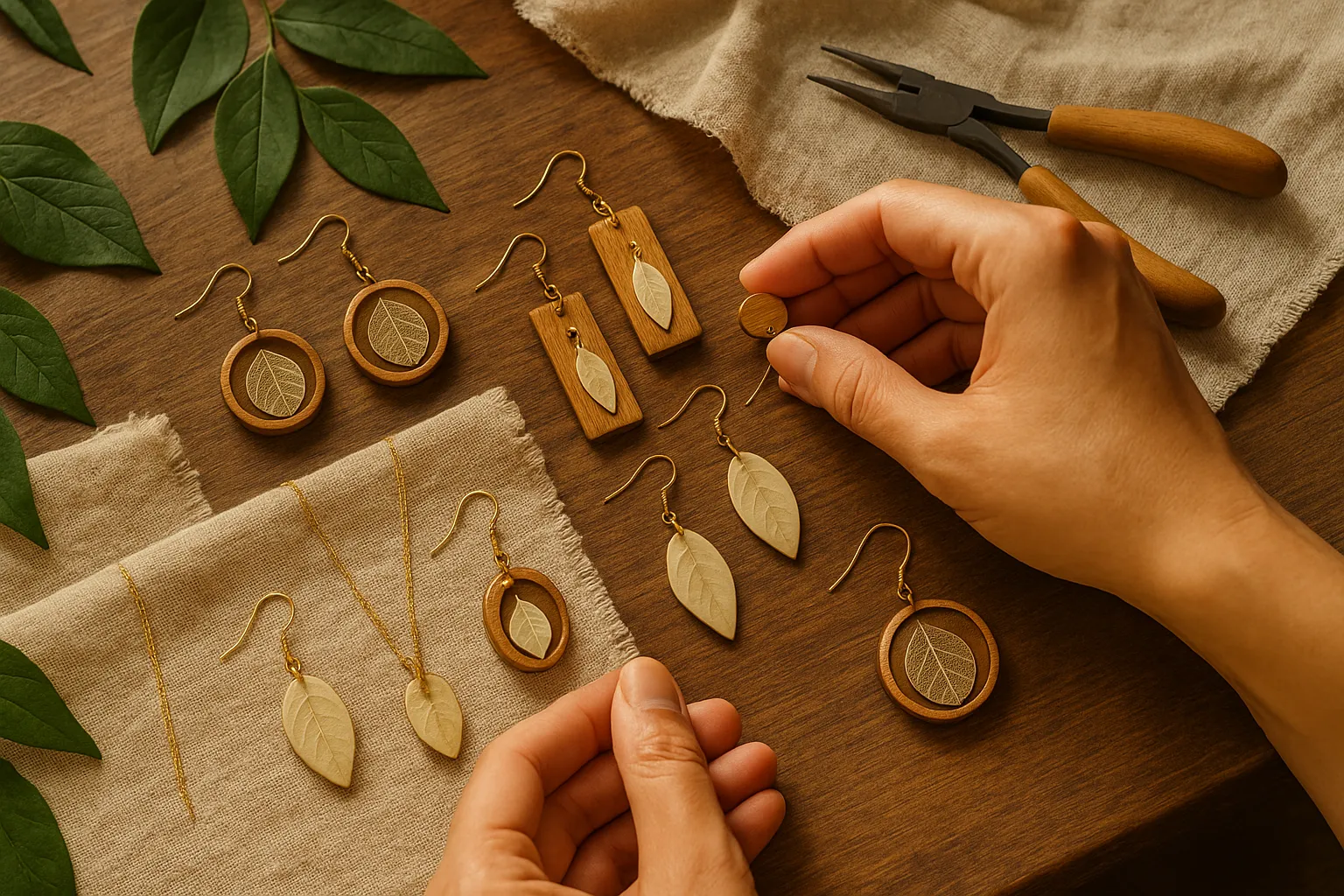Spotlight on Sustainable Practices Among Pakistani Jewellery Designers

Sustainability in fashion has gained significant attention in recent years, with the jewellery industry no exception. Pakistani jewellery designers are increasingly adopting sustainable practices to align with global trends and cater to the growing demand for ethically sourced and environmentally friendly products. This detailed article will explore the various sustainable practices among Pakistani jewellery designers, highlighting their efforts to promote ethical standards, reduce environmental impact, and preserve cultural heritage.
Introduction to Sustainability in Jewellery:
Sustainability in jewellery involves a commitment to ethical sourcing, environmentally friendly practices, and social responsibility. For Pakistani jewellery designers, this means sourcing materials responsibly, using eco-friendly processes, ensuring fair labour practices, and creating designs that respect cultural traditions while embracing innovation—the shift towards sustainability addresses environmental concerns and appeals to a growing market of conscious consumers.
The Rise of Sustainable Jewellery in Pakistan:
The jewellery industry in Pakistan has a rich history, deeply rooted in cultural and traditional practices. However, as global awareness about environmental issues and ethical consumption grows, Pakistani jewellery designers recognize the need to incorporate sustainability into their craft. Several factors drive this shift:
Consumer Demand: Increasingly, consumers are seeking jewellery that is not only beautiful but also ethically made and environmentally sustainable.
Global Influence: International trends and the global push towards sustainability influence local designers to adopt green practices.
Regulatory Pressure: Emerging regulations and standards on environmental protection and fair trade practices encourage designers to rethink their processes.
Key Sustainable Practices Among Pakistani Jewellery Designers:
Ethical Sourcing of Materials:
One of the most critical aspects of sustainable jewellery is the ethical sourcing of materials. Pakistani jewellery designers are taking significant steps to ensure their materials are responsibly sourced.
Conflict-Free Gems: Many designers are committed to using conflict-free gems, ensuring their stones are sourced from mines that do not fund armed conflict or exploit workers.
Fair Trade Gold: Fairtrade gold is increasingly popular among Pakistani jewellery designers, who ensure it is mined under fair labour conditions and with minimal environmental impact.
Recycled Metals: Some designers are turning to recycled metals, reducing the demand for newly mined materials and lowering their environmental footprint.
Eco-Friendly Manufacturing Processes:
The manufacturing process can significantly impact the environment, and Pakistani jewellery designers are adopting various eco-friendly practices to mitigate this.
Waste Reduction: Implementing waste reduction techniques, such as recycling metal scraps and minimizing material waste, is becoming standard practice.
Energy Efficiency: Designers use energy-efficient machinery and sustainable energy sources to power their workshops.
Non-Toxic Chemicals: Using non-toxic chemicals in the cleaning and finishing processes helps reduce harmful environmental impacts.
Social Responsibility and Fair Labor Practices:
Sustainable jewellery is about environmental responsibility, ensuring fair labour practices, and supporting local communities.
Fair Wages: Many Pakistani jewellery designers are committed to paying fair wages to their artisans and workers, ensuring they are compensated justly for their skills and labour.
Safe Working Conditions: Ensuring safe and healthy working environments is a priority, with measures in place to protect workers from occupational hazards.
Community Engagement: Designers often engage with local communities, providing training and employment opportunities and supporting community development projects.
Preservation of Traditional Crafts:
Sustainability also involves preserving cultural heritage and traditional craftsmanship. Pakistani jewellery designers are finding ways to honour and sustain these traditions while innovating for modern markets.
Reviving Traditional Techniques: Many designers are reviving age-old jewellery-making techniques, such as Kundan, Meenakari, and Polki, ensuring these crafts are passed down to future generations.
Fusion of Old and New: By blending traditional designs with contemporary styles, designers create unique pieces that appeal to modern tastes while preserving cultural heritage.
Supporting Local Artisans: Designers work closely with local artisans, providing them with sustainable livelihoods and helping keep traditional crafts alive.
The Impact of Sustainable Practices:
The adoption of sustainable practices among Pakistani jewellery designers has several positive impacts:
Environmental Benefits: Reducing reliance on newly mined materials and implementing eco-friendly manufacturing processes helps lower the industry’s ecological footprint.
Economic Empowerment: Fair wages and safe working conditions empower artisans and workers, promoting financial stability and growth in local communities.
Cultural Preservation: Designers ensure that cultural heritage is preserved for future generations by reviving and sustaining traditional crafts.
Consumer Awareness: As more designers embrace sustainability, consumers become more aware of the ethical implications of their purchases, driving demand for responsible products.
Challenges in Implementing Sustainable Practices:
Despite the growing emphasis on sustainability, Pakistani jewellery designers face several challenges:
Supply Chain Transparency: Ensuring transparency in the supply chain, particularly for gemstones and precious metals, can be challenging.
Cost of Sustainable Materials: Ethically sourced and fair trade materials can be more expensive, impacting the cost of final products.
Awareness and Education: Educating consumers and the broader industry about the importance of sustainability requires ongoing effort.
Regulatory Support: While some regulatory support for sustainable practices exists, more comprehensive policies and incentives are needed to drive widespread adoption.
Future of Sustainable Jewellery in Pakistan:
The future of sustainable jewellery in Pakistan looks promising, with several trends indicating continued growth:
Increased Consumer Demand: As consumer awareness grows, the demand for sustainable jewellery will likely increase, encouraging more designers to adopt ethical practices.
Technological Advancements: Innovations in technology can help designers implement more efficient and eco-friendly manufacturing processes.
Collaborative Efforts: Collaboration between designers, artisans, and industry stakeholders can drive the adoption of best practices and promote sustainability.
Government and Industry Support: Enhanced regulatory support and industry initiatives can provide the necessary framework and incentives for sustainable practices to thrive.
Conclusion:
The spotlight on sustainable practices among Pakistani jewellery designers highlights a significant shift towards ethical and environmentally friendly practices in the industry. By focusing on ethical sourcing, eco-friendly manufacturing, social responsibility, and cultural preservation, these designers are setting new standards for sustainability. Despite the challenges, the future of sustainable jewellery in Pakistan is bright, with growing consumer demand, technological advancements, and increased support from the government and industry stakeholders. As more designers embrace sustainability, they contribute to a better environment and preserve the rich cultural heritage of Pakistani jewellery-making for future generations.


